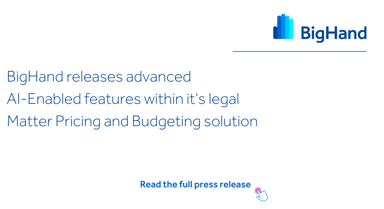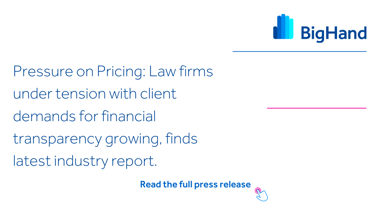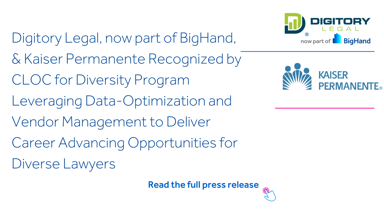Client pressure on law firms to offer more flexible fees has been on the rise for several years. When I joined BigHand earlier this year from my previous in-house pricing roles, there was a feeling in the industry that clients’ cost sensitivity peaked during the pandemic. Although we are on the other side of the crisis and adjusting to what that looks like, pressures from clients are unlikely to decrease now they have grown accustomed to firm concessions.
Our legal pricing and budgeting report, comprised of answers from 800 senior legal professionals and released earlier this month, has confirmed that feeling – revealing that clients’ demand for AFAs increased by 27%, and 42% of firms introduced AFAs this year.
How can firms determine which structure is the best to propose for a given client or matter? Below are my thoughts on three of the most popular AFAs:
Our survey revealed that 30% of firms now offer volume discounts. This is a great option for new or existing clients and incentivizes the client to bring more work to the firm in order to earn higher discount levels. They are also useful when the scope of the work is unknown. With these discounts, anticipating the volume of fees guides setting tier thresholds and discount levels.
However, firms should be aware that these discounts can be difficult to track and bill and can impact profits on low margin work if not used effectively. The impact on the firm’s perceived value also needs to be considered. Firms have invested in strengthening client relationships with more value-added services that justify client spend, and it should be ensured that discounts don’t undermine that work.
The findings showed that 24% of firms now offer more fixed fees than when the pandemic began. This option works best for those clients that express a need for predictability or cost certainty. When the work is properly scoped and budgeted accurately, they can be profitable for the firm – but unforeseen in-scope work can result in significant losses.
28% of our respondents confirmed that they now offer capped fees. Capped fees do a good job of addressing the concerns of clients who have a strict budget in place. There is generally no real financial upside for the firm with these structures, but they can be strategic when trying to win work in a new practice or geographic area, gain market share, or win a new key client.
These arrangements are here to stay, and with all AFAs, firms need to quickly catch up with the greater need for the work to be scoped, budgeted, and tracked accurately. In order to build vital commercial understanding throughout the firm, lawyers should be provided with dedicated budgeting tools, like BigHand Matter Pricing to stay close to actuals against budget and ensure profitability for the future of the firm.
To access the full Legal Pricing and Budgeting Report, click here






